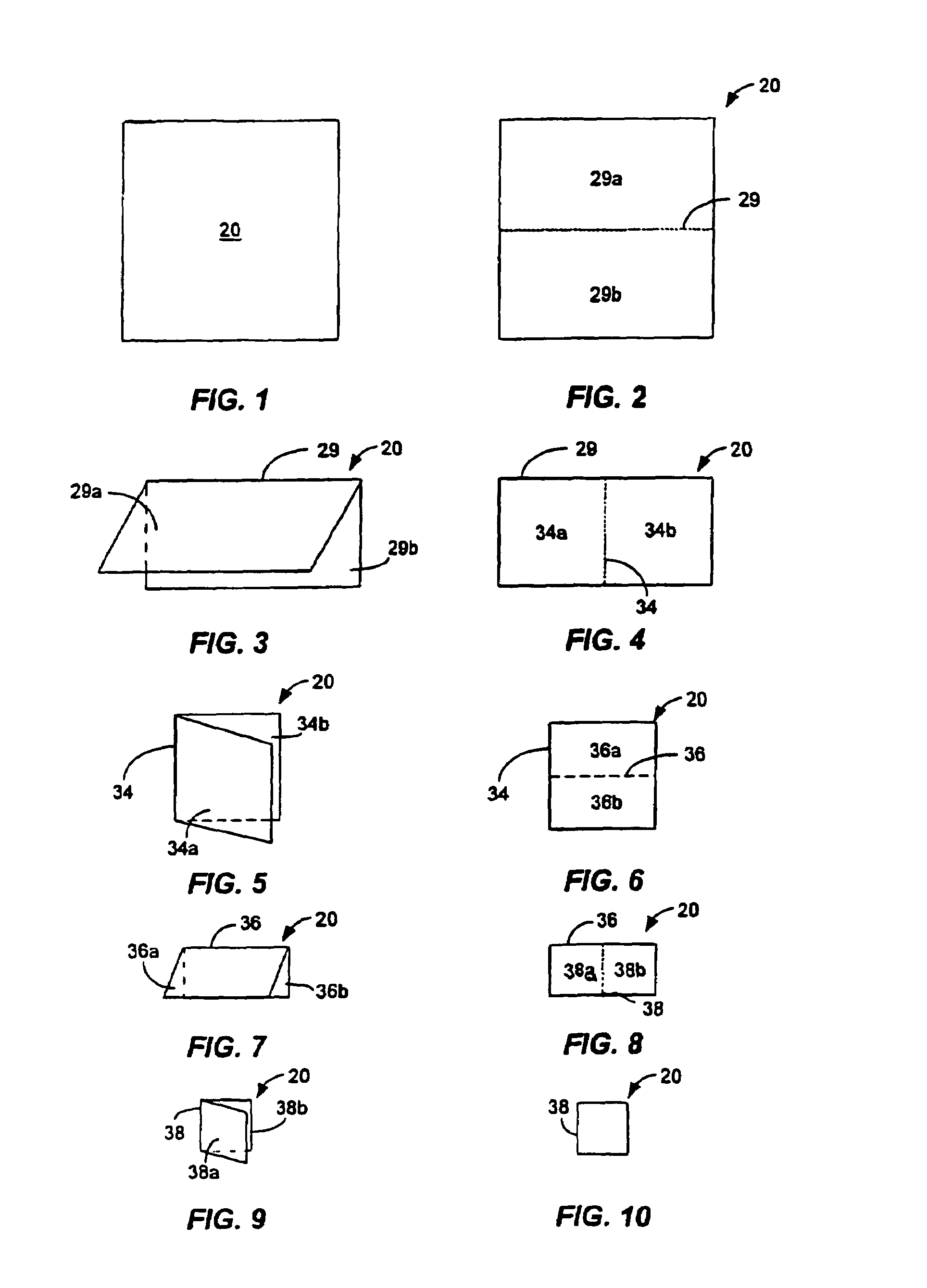Combined poster book system and method
a poster book and combination technology, applied in the direction of identification means, paper/cardboard containers, show cards, etc., can solve the problems of large space needed to read the sheet, accordion style folded sheets impose serious limitations in the manner in which printed matter presented can be read, and accordion style folded sheets are unsuitable for small quarters
- Summary
- Abstract
- Description
- Claims
- Application Information
AI Technical Summary
Benefits of technology
Problems solved by technology
Method used
Image
Examples
Embodiment Construction
[0020]Referring now to FIG. 1, this figure illustrates a sheet 20 of thin flexible material which is in an uncreased state. FIG. 2 to FIG. 10 illustrate one exemplary fold process of taking an uncreased sheet 20 of thin flexible material and folding it using a perpendicular fold method to render an embodiment of the present invention. The flexible material of the present invention can comprise paper, and specifically, plasticised paper. However, other flexible materials are not beyond the scope of the present invention. Other flexible materials can include, but are not limited to fabric or cloth materials, plastic, metal, cardboard, and combinations thereof that can be folded and unfolded in accordance with the present invention. For a non-limiting example, the flexible material could comprise mylar or other foil-like materials that can support printed matter.
[0021]In FIG. 2, a transverse or latitudinal first crease 29 can be made in the sheet 20 of material, dividing it in half and...
PUM
 Login to View More
Login to View More Abstract
Description
Claims
Application Information
 Login to View More
Login to View More - R&D
- Intellectual Property
- Life Sciences
- Materials
- Tech Scout
- Unparalleled Data Quality
- Higher Quality Content
- 60% Fewer Hallucinations
Browse by: Latest US Patents, China's latest patents, Technical Efficacy Thesaurus, Application Domain, Technology Topic, Popular Technical Reports.
© 2025 PatSnap. All rights reserved.Legal|Privacy policy|Modern Slavery Act Transparency Statement|Sitemap|About US| Contact US: help@patsnap.com



